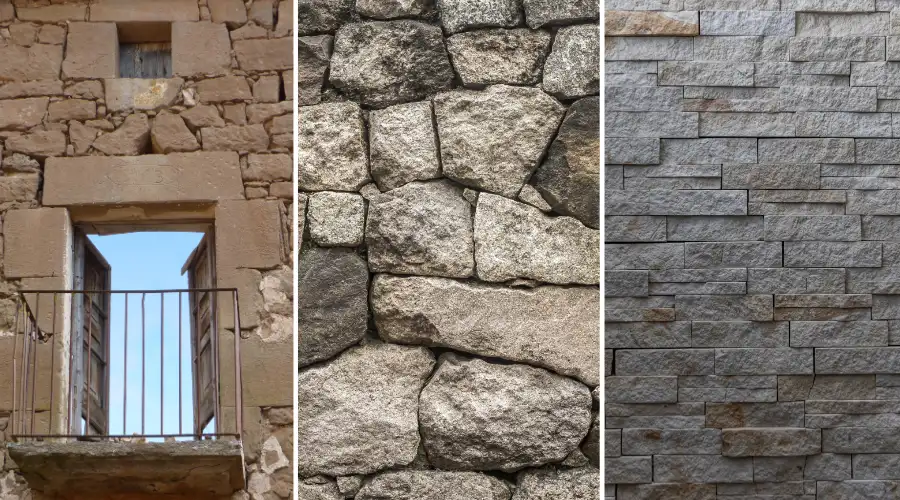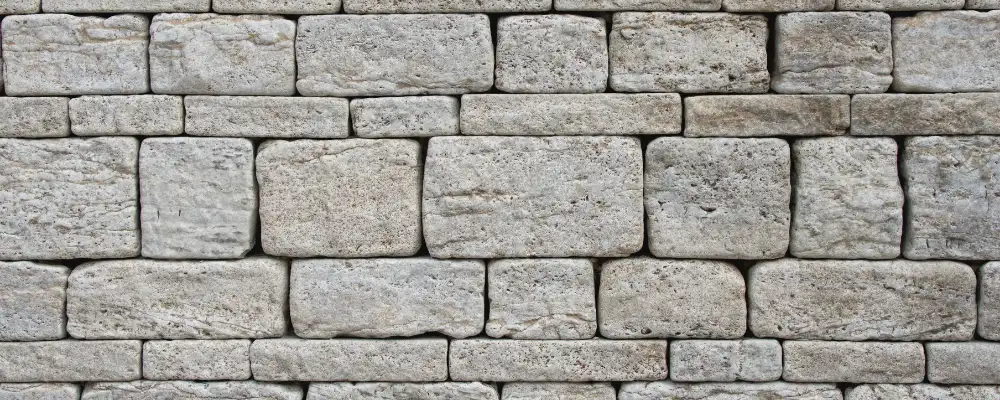Do you ever wonder what provides structural support above windows or doors, particularly in historic buildings? That element is called a lintel and it can be structural as well as artistic when made with stone. Therefore, whether your next venture is a new build or a restoration of a heritage building, understanding stone lintels can provide you with structural safety and longevity in your project.
If you are planning a future dream build and require professional expertise, reach out to Brick & Bolt! Brick & Bolt has engineers you can trust, who will help you select and install every element you require, and can advise you on durable lintels.
What are Stone Lintels?
Stone lintels are horizontal structural elements positioned above doors, windows, and other openings. They carry loads from the structure above them and transfer it to the surrounding mass. Lintel stone has long been used in ancient temples, colonial buildings, and even today, due to its strength, fire-resistant nature, and architectural beauty. Stone lintels can be used in their natural form, shaped, and/or carved to meet a specific structure and design necessity. They are often used not only for their strength, but also for their aesthetic value in buildings.
Types of Stone Used for Lintels

Some of the commonly used stone types for lintels are:
- Granite lintels are ideal for large spans and heavy loads due to their high density and durability. Though hard to cut, they are perfect for exteriors in harsh climates. Available in polished, flamed, bush-hammered and multiple other finishes, granite is also available in numerous colours like grey, black, brown, pink, red, green and mottled tones.
- Sandstone lintels are easier to carve and commonly used in traditional Western and Northern Indian architecture. Their warm, earthy colours—like beige, pink, red, and yellow—pair well with hand-chiseled or natural finishes. They suit moderate structural loads and offer a heritage aesthetic.
- Limestone lintels offer a clean, refined look, perfect for internal or decorative uses. Typically available in pale tones such as cream or off-white, they feature honed or antique finishes and are used in low-stress modern applications.
- Slate lintels are best for smaller openings, offering a naturally layered texture with high moisture resistance. Available in dark greys, greens, and purples, they’re used more for visual appeal than their load-bearing capacities.
Benefits of Using Stone Lintels in Construction
- High Load-Bearing Capacity: Stone lintels can hold a massive amount of structural loads on buildings or large or small openings. This load-bearing capacity provides safety, stability, and longevity in all buildings, particularly when used in the upper levels of multistorey buildings.
- Weather Resistance: Natural stones such as granite and limestone can tolerate extreme weather conditions without cracking or rotting. This property is especially critical where heavy rain, extreme sunlight, or very strong winds are prevalent.
- Aesthetic Appeal: Stone lintels are aesthetically pleasing. They can accentuate and enhance almost any building, residential or commercial in contemporary or traditional architectural styles. Stone can add a sense of character to facades, entrances, and windows with its natural colour and texture.
- Long-Term Durability: Stone is non-combustible, pest-resistant, and is not susceptible to warping like wood. If installed correctly, stone lintels can last for many decades and centuries without the necessity for any tedious maintenance.
- Fire and Pest Resistance: Unlike wood lintels, stone lintels are completely fireproof and immune to infestations by termites and other pests. They are therefore one of the safest and most durable products available for both residential and commercial buildings.
Indian Standards for Stone Lintels
Indian Standards for stone lintels, outlined in the codebook IS 9394:1979, provide clear guidelines for their design, dimensions, and material specifications to ensure structural integrity and durability in construction.
The standard specifies the dimensions of stone lintels, with a minimum depth of 100 mm and a maximum clear span of 2.65 meters. It also includes tolerances for dimensions, which vary based on the length of the lintel. For clear spans up to 1.2 meters, tolerances are ±1.5 mm, while spans over 1.2 meters allow for ±3 mm tolerance.
The throating size, set at 16 mm x 8 mm, ensures proper fitting to the soffit of external lintels, providing additional strength. Bearing lengths are also defined, requiring a minimum length equal to the depth of the lintel or half the width of the supporting masonry, whichever is higher.
Physical properties such as hardness, ultrasonic pulse velocity, and wear resistance are also outlined in this codebook to maintain high-quality standards.
Applications of Stone Lintels in Construction
Stone lintels have a wide range of architectural applications from structural and aesthetic perspectives. The most common application of stone lintels is over doors and windows, where they act as a critical structural element of the building. However, stone lintels are also found above ventilation shafts, basement openings, and archways, especially in traditional construction methods that utilise load-bearing walls.
Stone lintels can also be used in contemporary designs and homes with stone cladding or natural stone features which require aesthetic consistency. Carved from stone blocks, these elements typically require consideration of both structural integrity and aesthetic qualities for usage.
Installation Process of Stone Lintels
Installation of a stone lintel must be done carefully, ensuring it properly bears the load while fitting seamlessly with the structure.
- Step 1 – Measuring and Cutting to Length: In the first step, the opening of the door or window is measured accurately. The stone is then cut with an appropriate bearing length (often 150–200 mm on both sides) to help distribute the load better.
- Step 2 – Mortar Bed: Once the mortar bed is laid across the supporting walls, it provides a solid base where the lintel will rest. A well-prepared mortar bed with proper bedding supports the stone and compensates for minor irregularities, ensuring a level surface for the structure.
- Step 3 – Lintel Positioning: The stone lintel level will be set using machines or manpower, depending on the size of the stone and potential safety factors. Proper alignment is checked, including gaps or tilts, which can cause load distribution and water seepage issues.
- Step 4 – Curing & Finishing: After the lintel is placed in position, it can be allowed to cure with as little disturbance as possible. The aesthetic finishes and joint sealing would take place after the stone is fully cured.
If you’re unsure about safe installation, let the experts at Brick & Bolt take care of it. Their site engineers and contractors handle the process with complete precision and safety.
Cost of Stone Lintels
Stone lintel pricing varies based on stone type, dimensions, design, and other labour costs.
- Natural stone lintels like granite or sandstone typically cost ₹2,500 to ₹6,000 per meter for standard finishes and thickness (75-100mm), with prices increasing for complex carvings or customisations.
- Limestone lintels range from ₹2,000 to ₹5,000 per meter,
- Marble lintels range from ₹3000 to ₹7,850 per meter, and
- Slate lintels range from ₹2,500 to ₹4,500 per meter.
- Installation prices vary with differing factors like region, access to the site, and whether skilled or unskilled labour is needed.
Stone lintels are more expensive than timber or steel lintels; however, they generally last longer than both. As a result, the overall initial cost will average out over a lengthy period.
Maintenance and Lifespan of Stone Lintels
Maintenance Tips
Stone lintels need minimal maintenance, but should be checked regularly for safety. Look for signs of cracking or displacement, especially after heavy rains or structural movements. They can be cleaned using a soft brush and water. Avoid using acids or strong chemicals as they can cause permanent stains and loss in aesthetic quality.
Lifespan
With proper installation/maintenance, stone lintels can last 50 to 100 years or more. Historic monuments with stone lintels that are still standing after several centuries showcase their durability. Stone lintels in modern homes provide a durable, timeless, and unique aesthetic, offering both traditional charm and practicality, with easier installation compared to past methods.
Conclusion
Stone lintels are important to maintain the strength and aesthetics of a structure. They can transfer loads from above openings or can simply give your building some elevation in its design language. If you are serious about building quality homes, stone lintels can be a useful addition to your project. Whatever your design vision, from rustic to contemporary, stone lintels can check all the boxes. With a dependable friend like Brick & Bolt, you can look forward to a solid installation, long-term performance and eye-catching perfection in every detail.

